Arcitile + Belstaff + Ketley Brick
A Space Between Arcitile + Belstaff + Ketley Brick
Date June 2024
Location Birmingham, UK
At Arcitile, we are committed to supporting British craft and trade traditions. When it comes to working with the best materials, we know that just as much skill, thoughtfulness and patience is required to lay tiles as to create them – this is why we champion the materials of our trade.
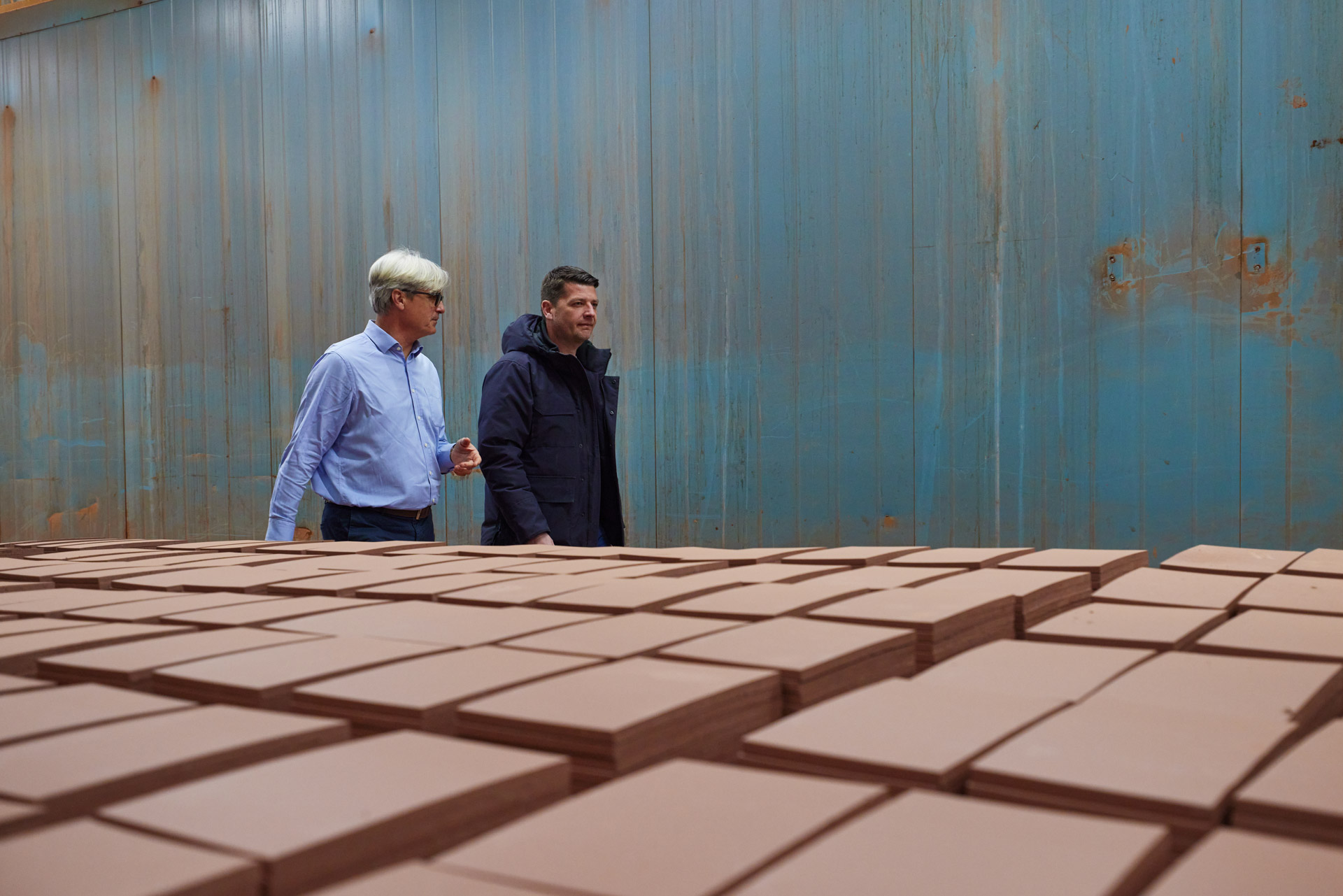
We go beyond calling ourselves tiling contractors. We see ourselves as an essential component in the building process – bridging the space between. We founded our company in 2017, bringing with us more than forty years’ experience. Over the years, we’ve been lucky enough to work on incredible projects – both heritage and cutting-edge – and visit brilliant manufacturers to understand the products that we work with.
In this issue of A Space Between, we visit Ketley Brick, the maker of the Staffordshire blue quarry tiles chosen by Specific Generic, the Stockholm design office, for the Belstaff flagship store on London’s Regent Street. The tiles were supplied by Solus Tiles – our neighbours in Clerkenwell – and installed by us, Arcitile.
Building a new industrial heritage

“The main install took us around two-and-a-half weeks,” says Tony Goodall, our Operations Director at Arcitile. The floor was laid in its entirety – starting with the basement, then the ground floor and stairs – before a select few brick tiles were removed to be replaced with the logo-debossed accents. “The tile placement was marked up in the setting-out drawing, but we had to check if it would actually work in the space,” Tony says. As a result, a few tiles had to be moved, highlighting the importance of our agile, hands-on approach. “The overall installation was quite complicated as there were obstacles on site, such as floor boxes, stair treads, risers and stringers,” Tony explains. “It can be quite laborious, but it’s such a satisfying process.”
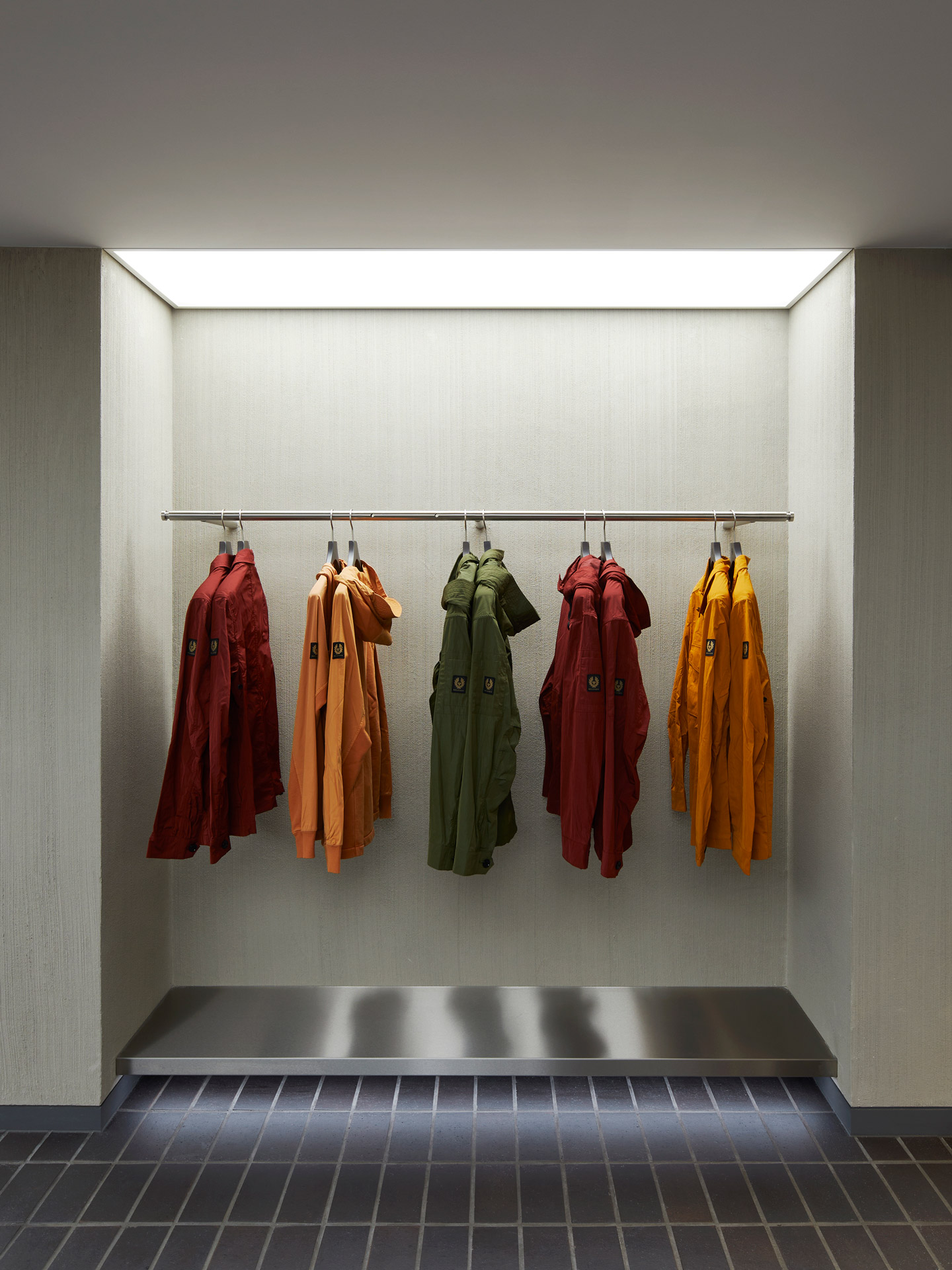
Take a moment to look beneath your feet in Belstaff’s flagship store on London’s Regent Street, and you’ll notice smoky quarry tiles quietly telling the story of Staffordshire’s industrial heritage. Belstaff Manufacturing Ltd formally began business in Stoke-on-Trent in 1924, and four years later converted a former brewery, cottages and blacksmith’s shop into a motorcycle clothing factory on Caroline Street in Longton.
Just 30 miles south of that site, in the heart of the Black Country of Staffordshire, lies Ketley Brick, on Brierley Hill. Bricks and tiles were first made on the site in 1805, and now form the floor of Belstaff’s flagship store, which opened in September 2023. The quarry tiles were carefully laid by Arcitile, with accent bricks debossed with the winged Belstaff logo.
Belstaff’s first garments were designed to be worn for riding motorbikes, so Stockholm-based design office Specific Generic naturally looked to the elements of a garage environment as inspiration for the flagship space. “We thought about the garage as the start and end point of journeys and travels,” says Maja Bernvill, Chief Creative Officer at Specific Generic. “The garage becomes somewhere where you bring in mud from the roads that you’ve been travelling on.”
Specific Generic first became acquainted with Ketley at the Solus Tiles showroom during Clerkenwell Design Week 2022, just a ten-minute walk from Arcitile’s base. Solus presented a striking installation, ‘The Marl Pit’, consisting of Ketley brick slips balanced on their ends. “It was a very immersive, interactive installation,” explains Sam Frith, Creative Director at Solus, which supplied the tiles for the Belstaff project. “As people walked over
the bricks, they moved and created sounds – it was a sensory experience.”
"As people walked over the bricks, they moved and created sounds — it was a sensory experience."
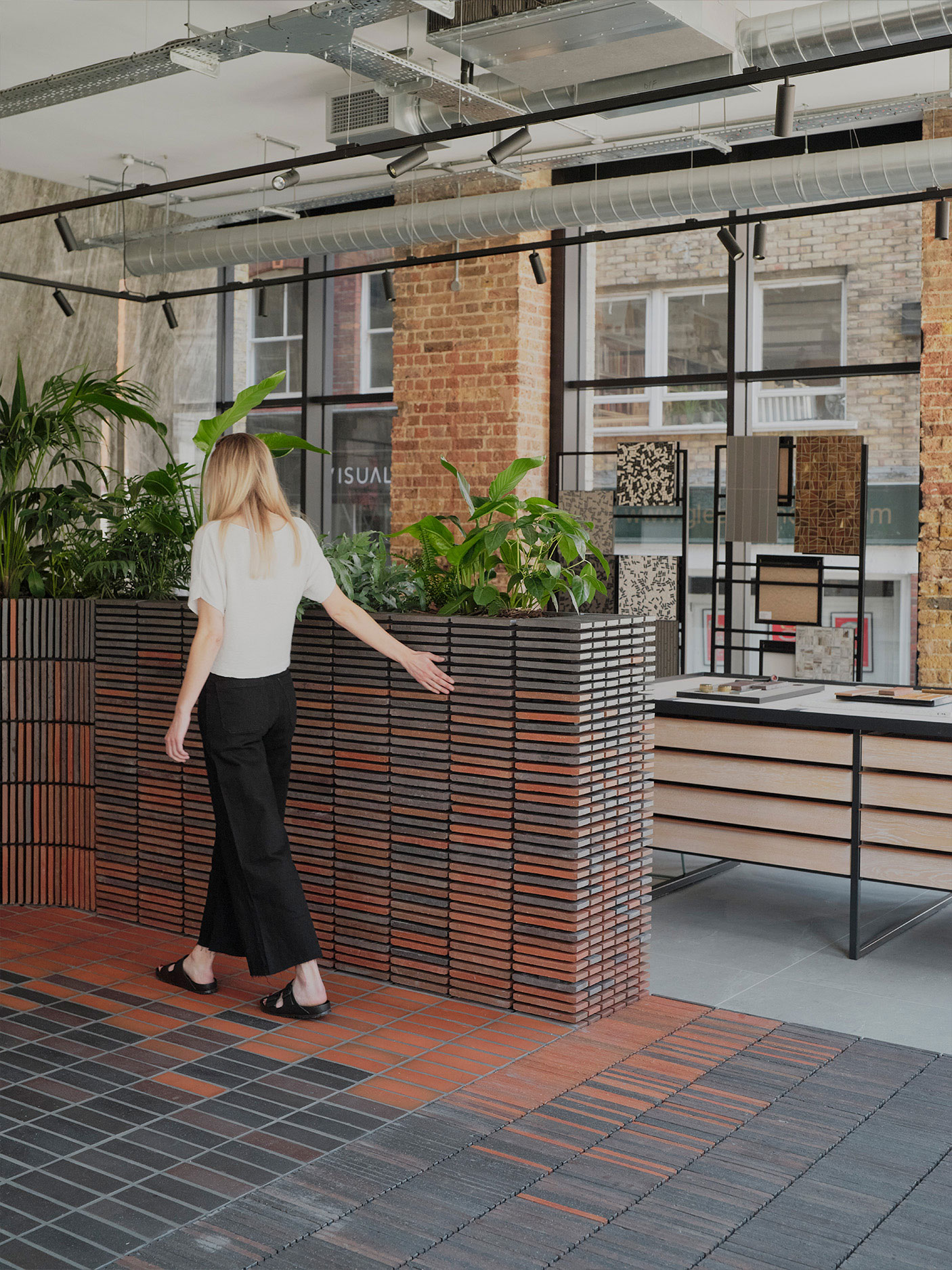

Upon learning that the bricks were created so near to Belstaff’s original site, Specific Generic realised it was the perfect fit for the flagship store. “It gave them the opportunity to represent the brand’s values and history in the materiality of the space,” says David Sherry, Sales Manager at Solus. “They became integral to the project,” Maja from Specific Generic adds. “I found it really interesting that the tiles are made from burned earth, so we were able to bring in the metaphorical dust and dirt from the roads into the space in an elevated and sophisticated way.” The distinctive Staffordshire blue colour of the floor tiles has a “subtle metallic shimmer,” which Maja was drawn to. “It reminded me of spilled oil on the garage floor,” she says, of its slightly iridescent effect.
Maja began looking at maps for inspiration, imagining how they would be used by bikers to establish their routes. “We were looking at the curves of contour lines on maps, and the grid that helps you find the coordinates to plot out your journey,” explains Maja. This juxtaposition of curved and angular lines is reflected in the space by the clay-rendered curved interior walls, which are offset by the grid pattern in which the brick tiles are laid. The walls not only echo the raw material of the floor beneath your feet, but create a journey and a sense of exploration. This is further enhanced by the accent bricks marked with the Belstaff logo – the placement was considered so that visitors can discover them quite naturally as they move through the space.
"Everything in the flagship store has a reason and a purpose. This is the new era of Belstaff, a brand not held back by its history, but propelled by it."

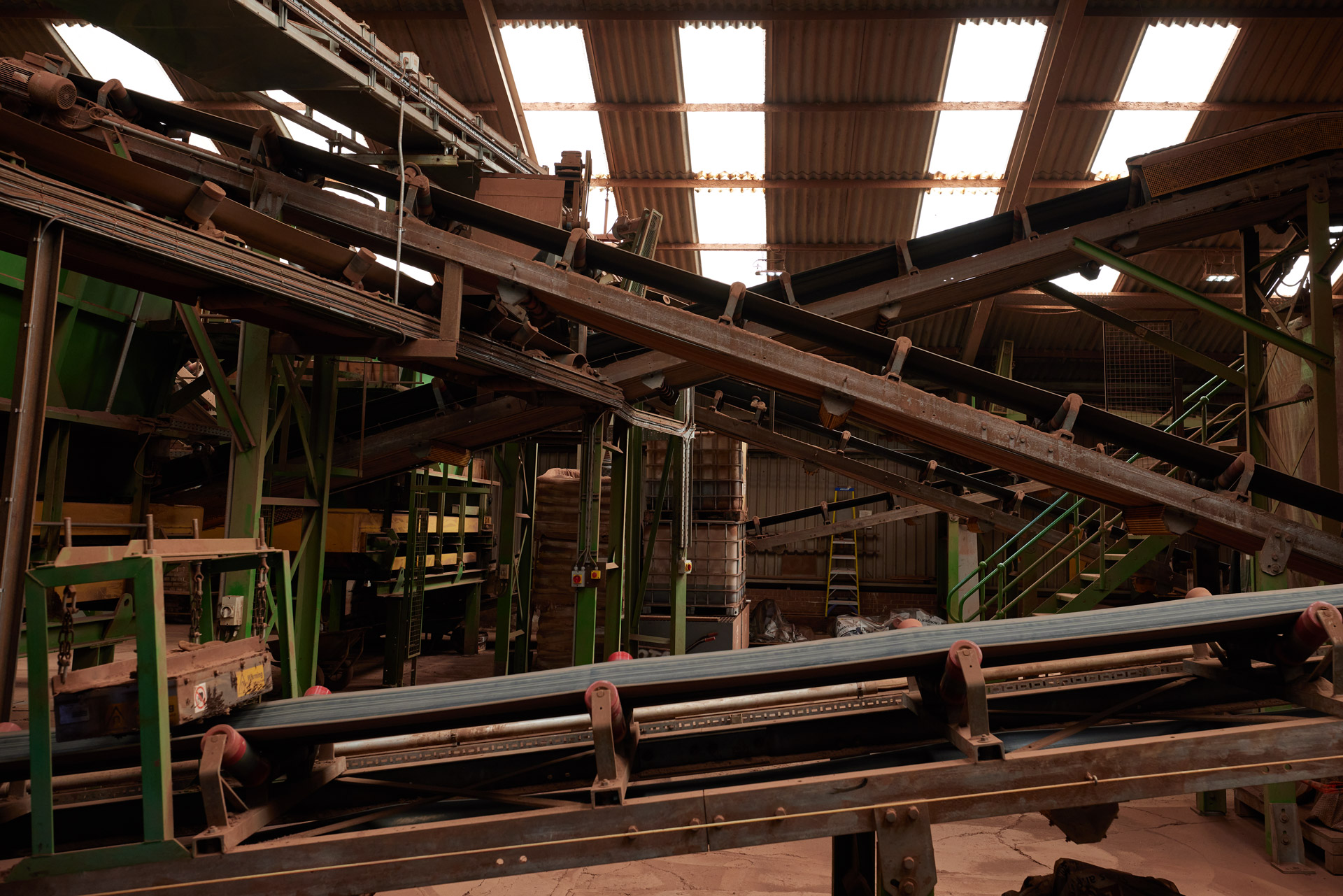
Ketley Brick is situated on a hill, with buildings positioned down the site. “The original idea was for the products to travel down the hill with each part of the process, as they are so heavy,” explains Alex Patrick-Smith, Chairman of Ketley. Alex’s wife, Dana Patrick-Smith, is Ketley’s Marketing Manager, and her family have led the company for generations.
The crumbling red earth is carried through the factory buildings and open spaces – covering shoes, clothes and hands in shades of burnt sienna and rust. “We bought the previous quarry in the 1930s and, when it became uneconomic to operate, we acquired our current quarry,” explains Alex. “We use a particular type of clay, Etruria Marl and this is a scarce resource. Clay is vital to us. If we don’t have quality clay, we don’t have a business.” Today, the clay is transported here by lorry from the nearby quarry and tipped out, cascading into a covered store that creates its own sculptural valleys and hills. “We have another 50 years of clay from this particular quarry,” Alex explains. “The key to our future is having control over our raw materials. Clay is a natural material, but it’s our job to make sure what we create is consistent.”
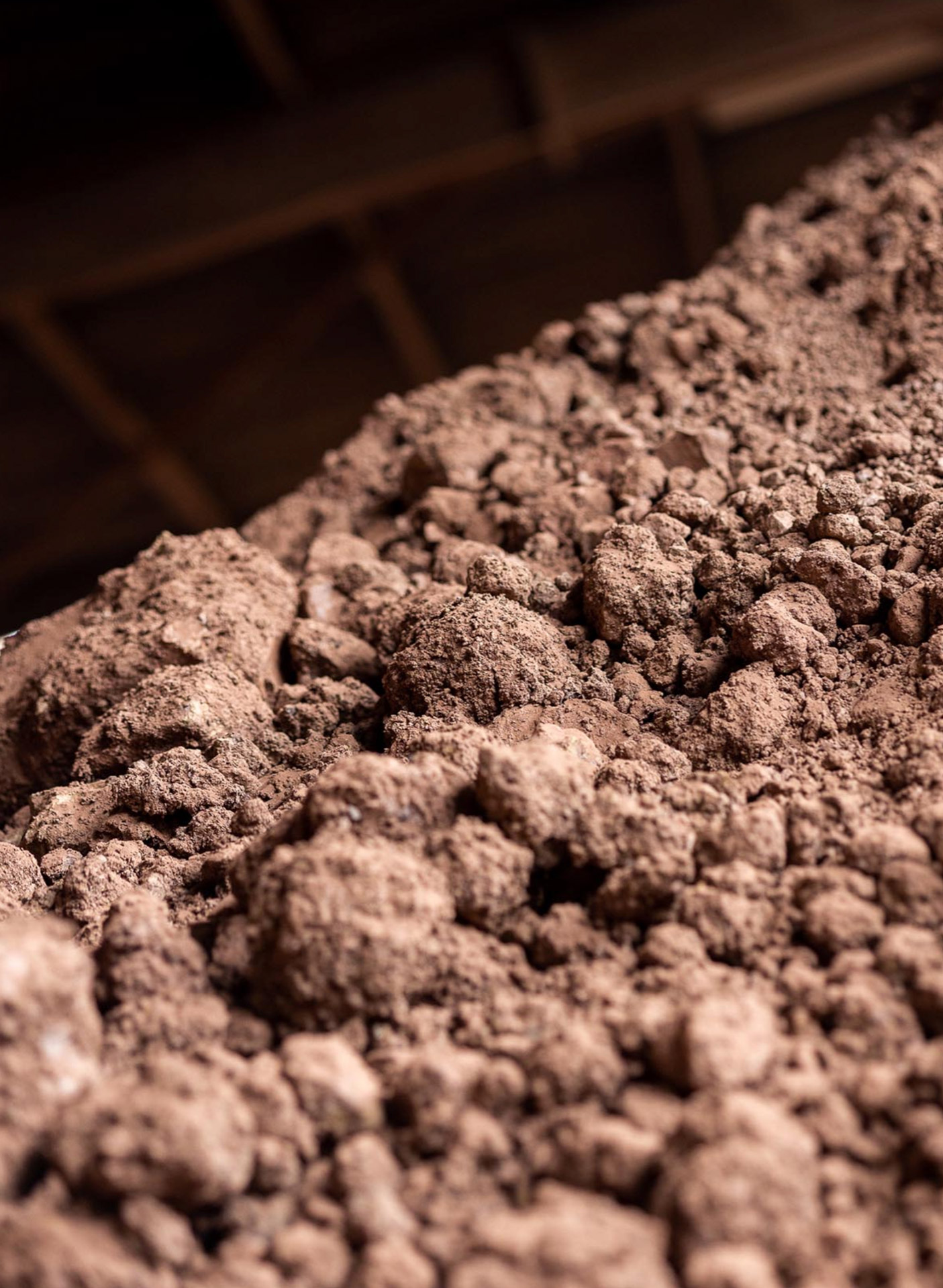
"The key to our future is having control over our raw materials."
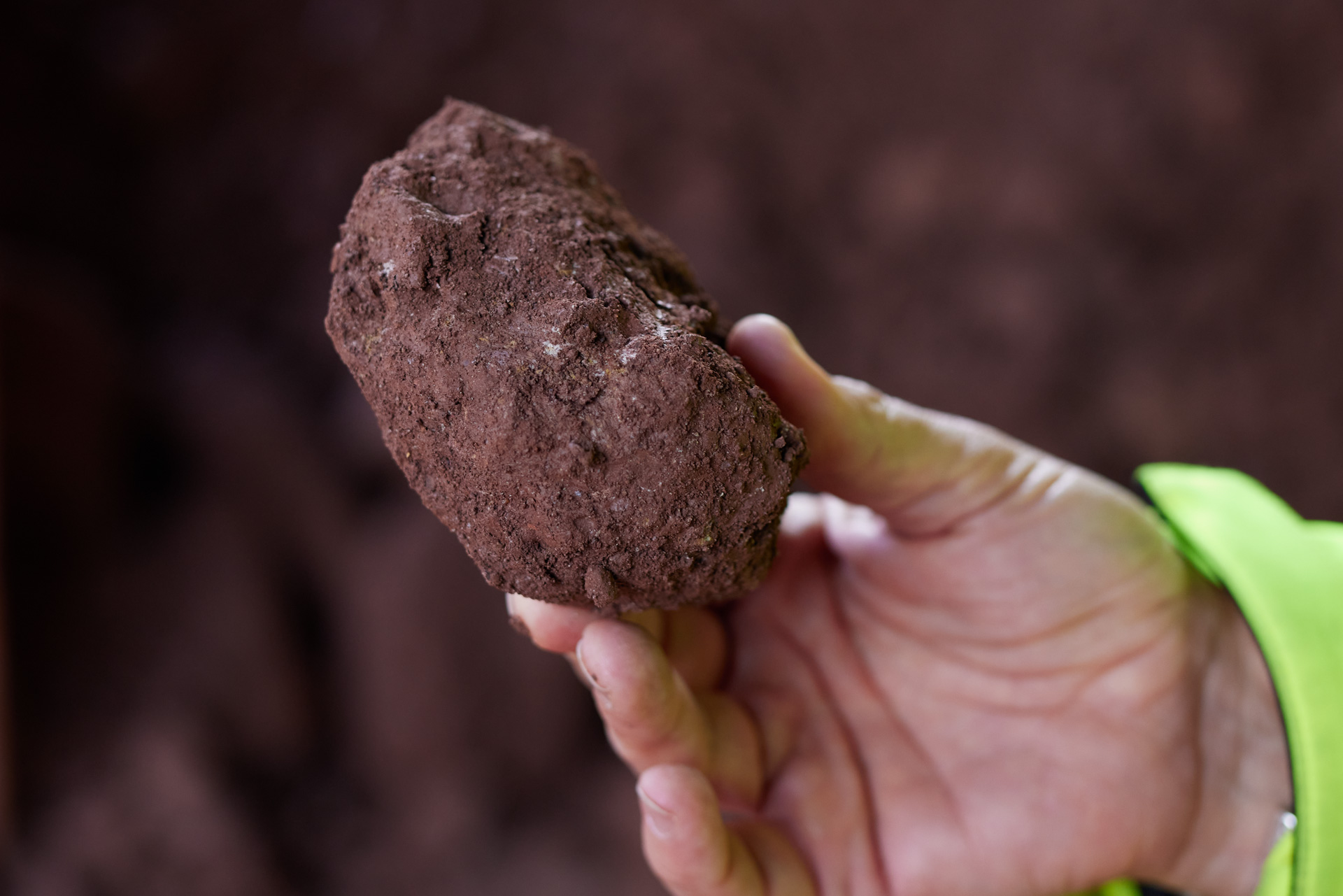
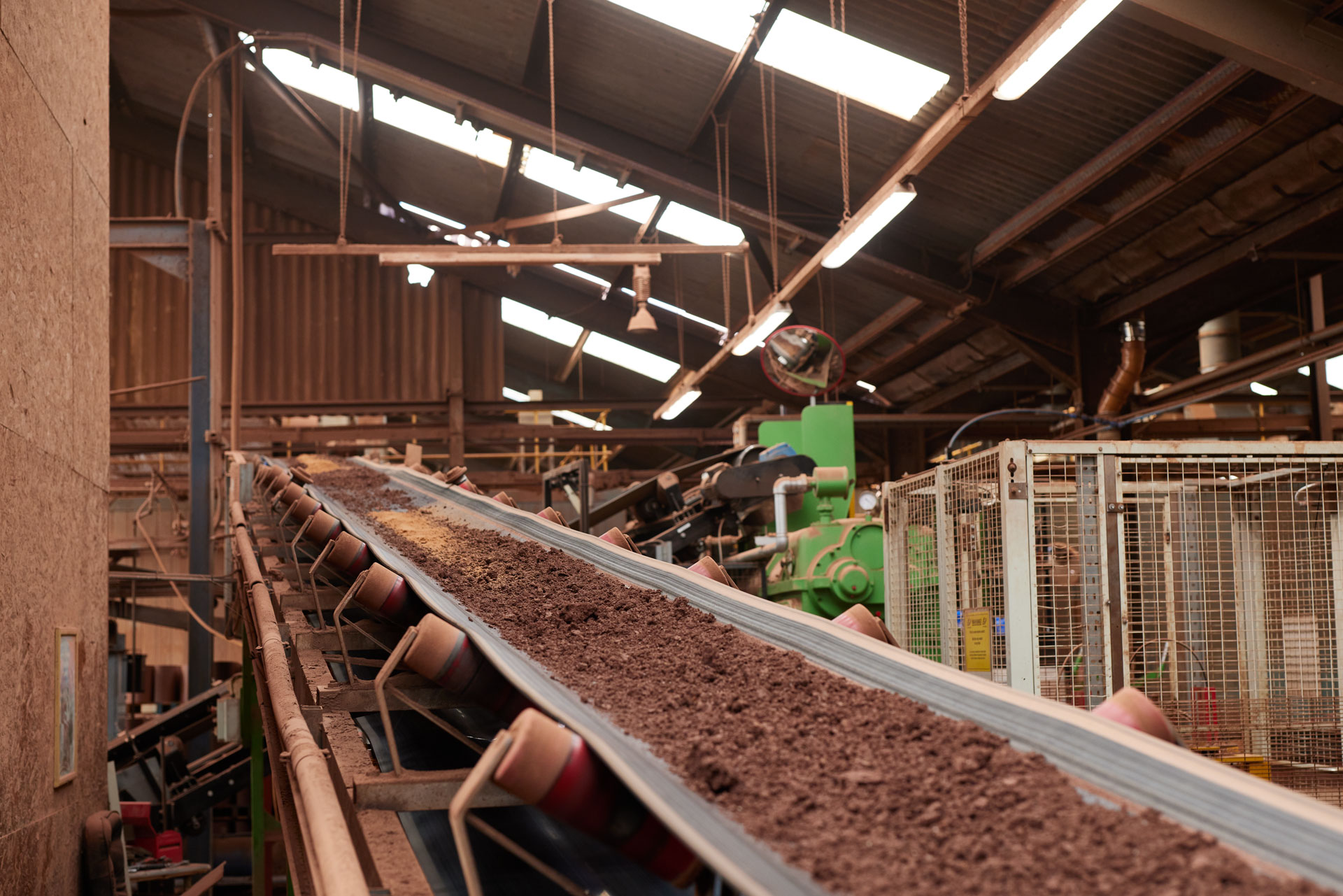
Ketley processes a huge amount of clay each day – around 120 tonnes – and produces an extraordinary number of bricks – 25,000 on the main extrusion line. But there are still parts of the process that require time and patience to perfect. In one of the light-filled spaces, akin to a pottery studio, Steve Cartwright is working on creating the bricks for a large arched fireplace, a custom commission. “This is what we call a shrink rule,” he says, running his fingers across the metal. He explains how each measurement is used to scale up the size of the brick templates he makes, allowing for shrinkage which naturally occurs during the drying process. “And you’ve got to get the smoothing off exactly right,” Steve says, as he skilfully skims a metal tool across the top of the template with precisely the right amount of pressure. “This is the finished product, so there isn’t room to make any mistakes.” Each groove will affect how the brick fires in the kiln, and Steve has perfected his technique over the 20 years he has been working at Ketley.
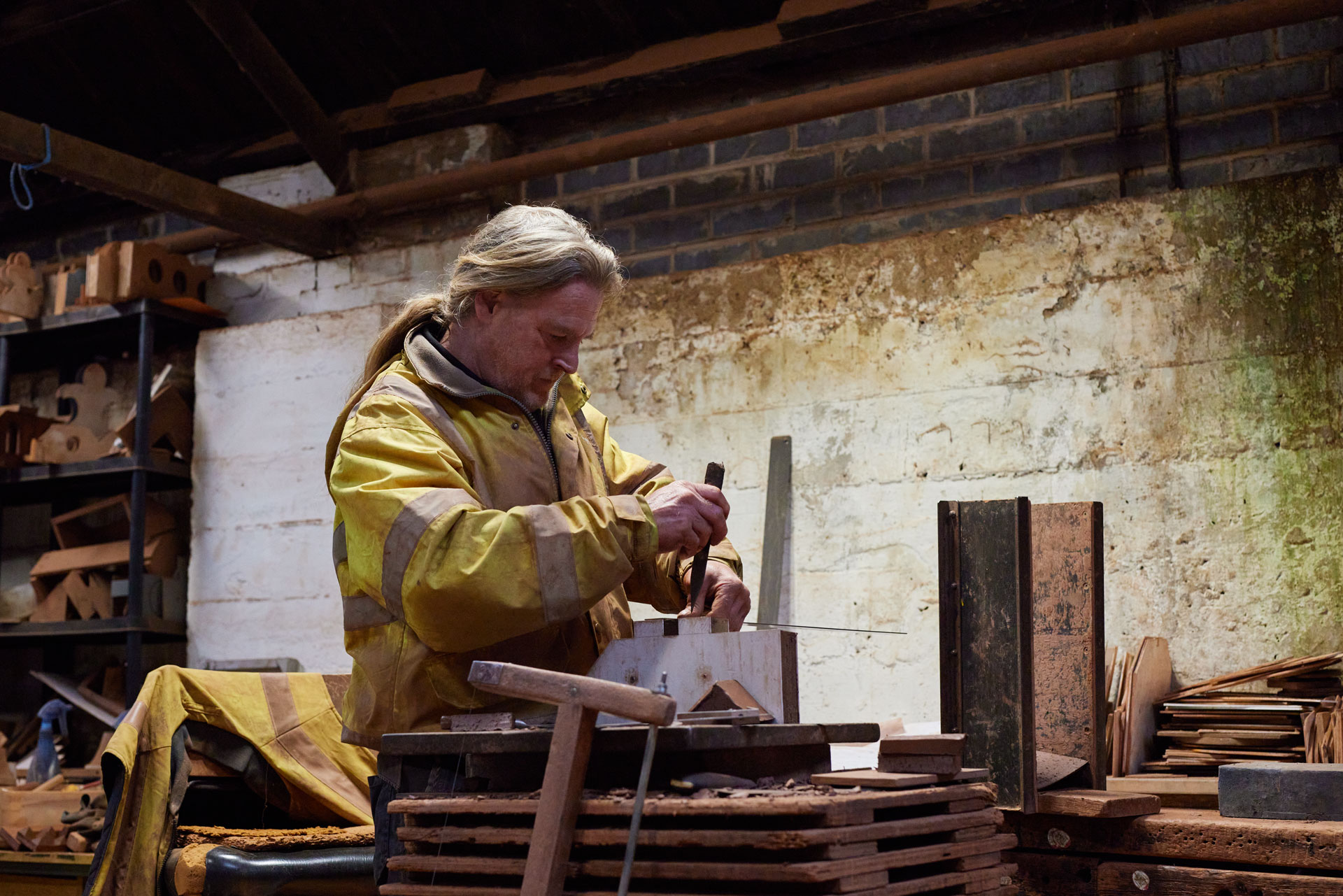
"Clay has a memory, so if you extrude it in a certain way and try to bend it the other way it remembers the shape – you have to be mindful of those dynamics."
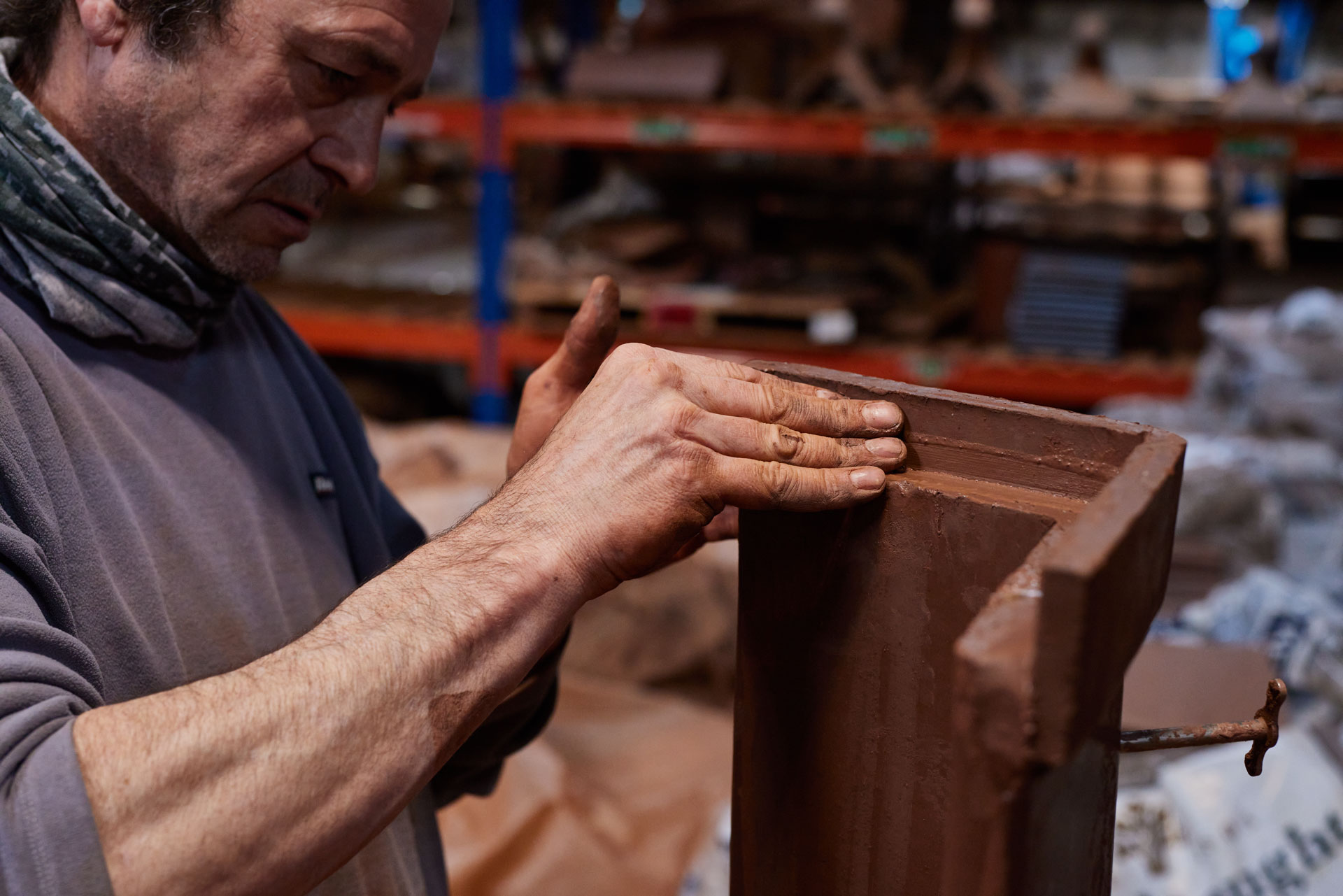
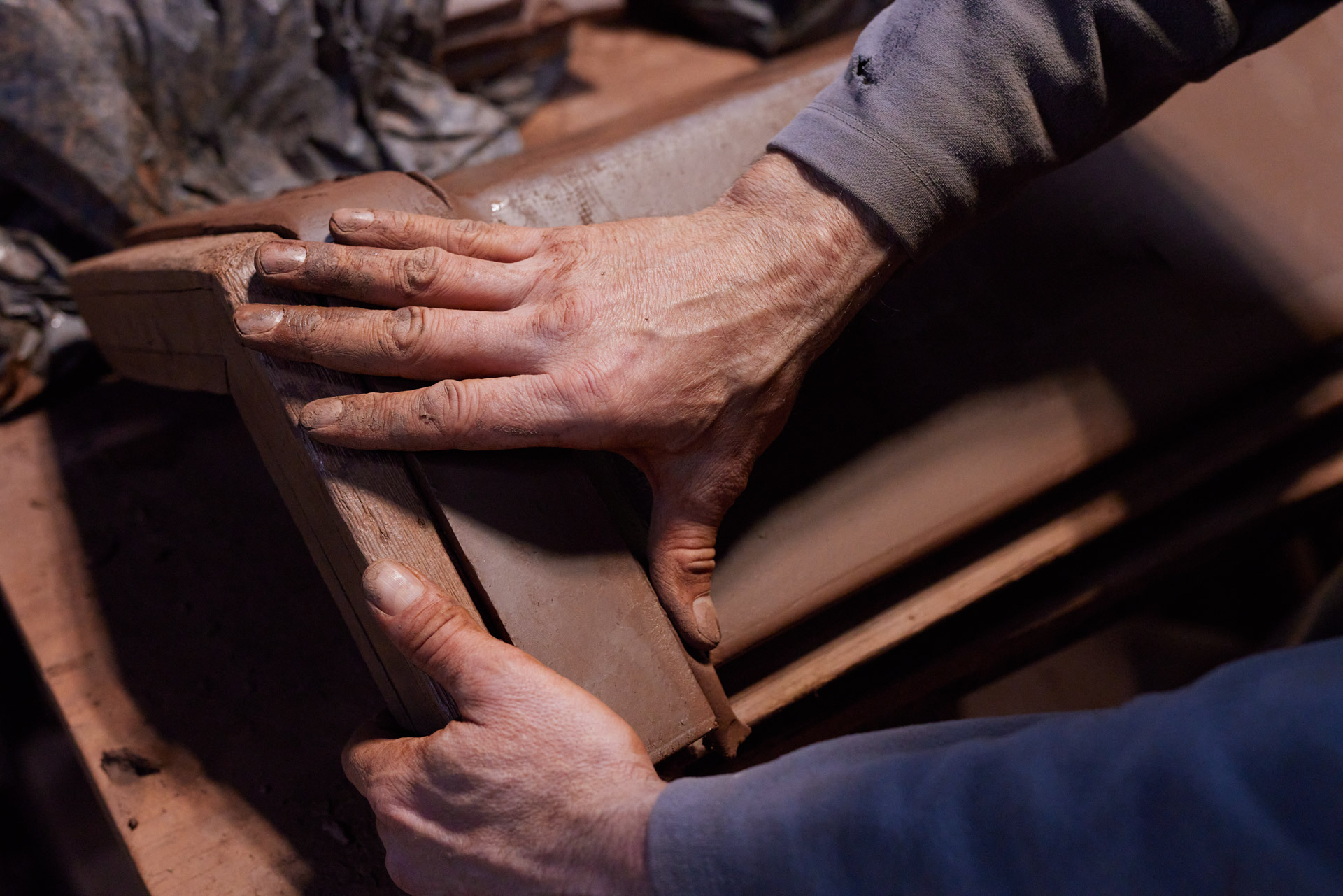
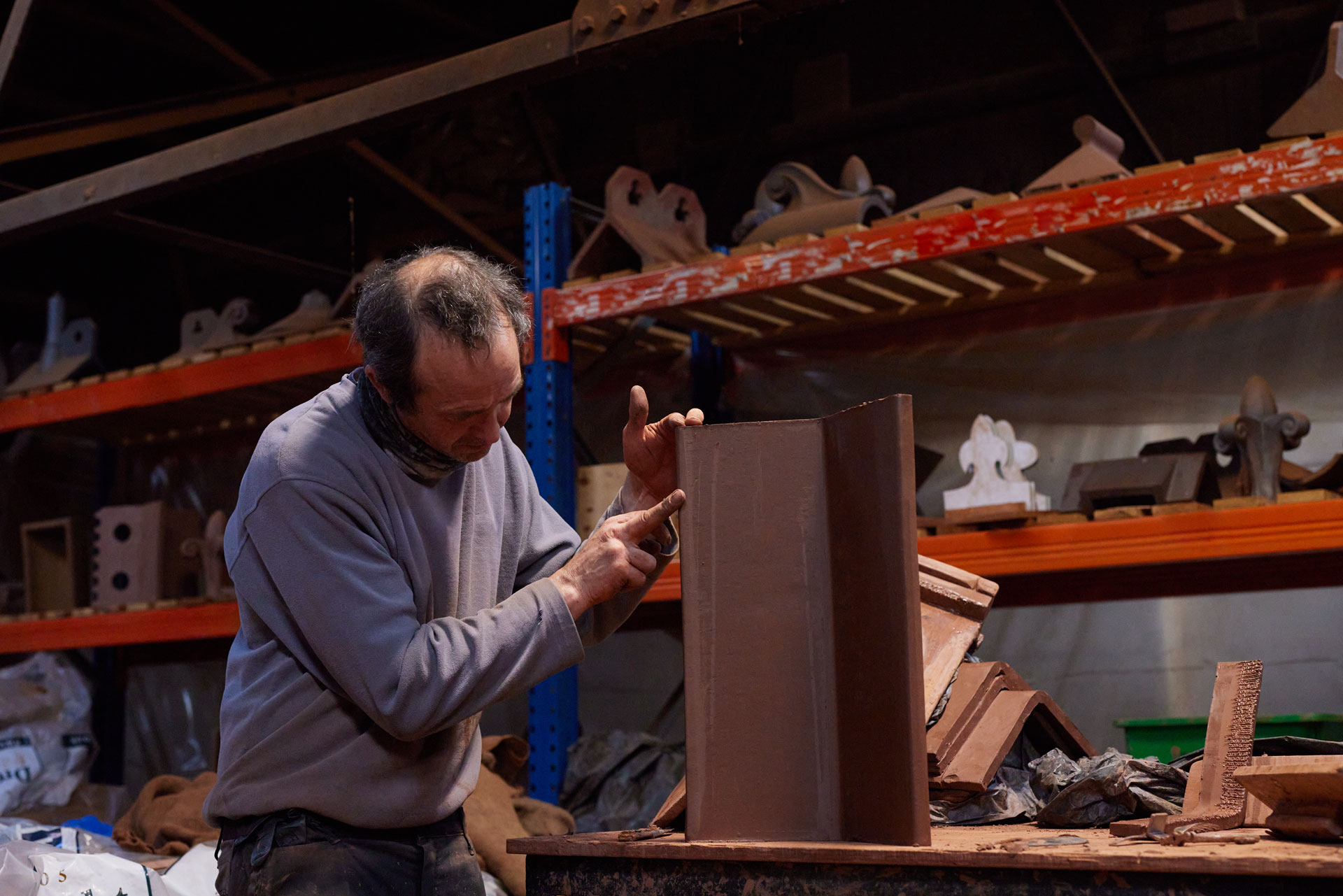
Close by, Jason Evans is responsible for creating ornamental elements. Lined up on the shelf behind him are an array of finials, ranging from rounded heritage designs to elaborate fleur-de-lis. Jason uses plaster of Paris moulds, then hand-assembles the clay. “When I start off with the moulded clay, it’s quite flat, so I have to sculpt the design in,” explains Jason. “You do lose yourself in it.” Before joining Ketley, Jason used to mould cornices on historic buildings. “I worked on some of the Tudor buildings at the University of Birmingham,” he says. “I enjoy creating the more complicated pieces, as long as everything is going my way! It’s a challenge to look at a drawing and think about how I’m going to achieve it with the material.” “Clay has a memory,” Alex adds, “so if you extrude it in a certain way and try to bend it the other way it remembers the shape – you have to be mindful of those dynamics. That’s where it pays off to have the experience and creativity that Jason has.” Ketley has positioned itself as a company that can tailor its production to any bespoke commission. “We can do pretty much any job that comes along – the key thing is that it has to be suited to our type of clay,” Alex says. “It’s quite specific, it makes very durable, hardwearing products. The bricks we make are engineering bricks, designed to have a high crushing strength so they would hold up a bridge. They also have very low water absorption, so they are frost resistant, making them even stronger.”
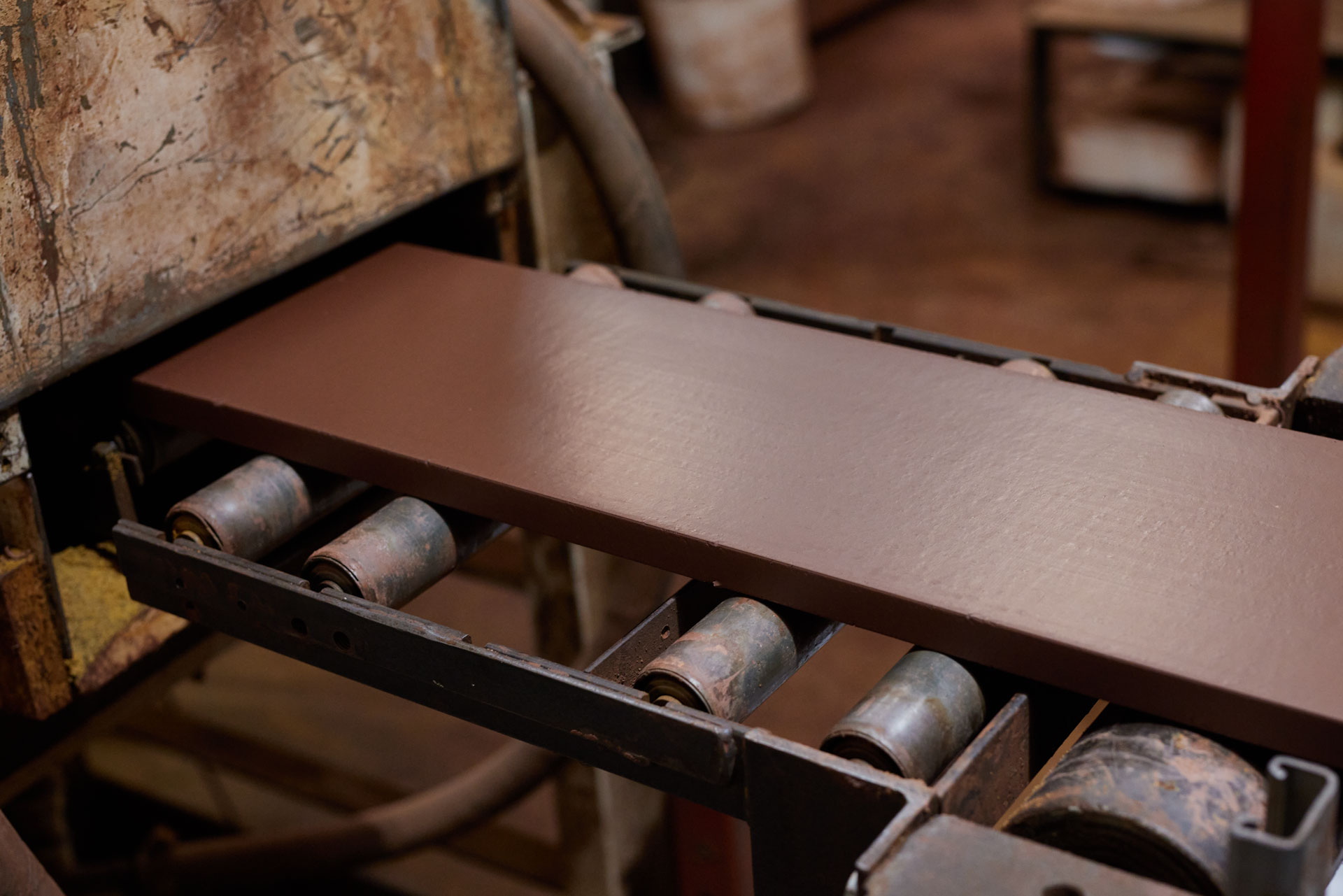

The quarry tiles Arcitile laid at Belstaff are fired with precise high temperature, low-oxygen conditions in the kiln that result in the distinctive Staffordshire blue colour, which you might recognise from London’s renowned Barbican Estate and the BFI on Southbank. The iron-rich clay fires bright red until the last 30 minutes, when the oxygen is reduced. But before the firing, the clay must be prepared by being crushed and ground through extremely fine high-speed rollers, then mixed with water to make it supple for the extrusion process. This area is managed by Andy Potter, who ensures the smooth working of the machinery and has been at Ketley for 27 years – “and I’ve never had a day off sick!” he laughs. Over the years he has been working here, parts of the process have been automated – such as when a new robotic handling system was introduced – allowing the business to be more flexible and responsive. “Even if we have a small order, we’ll go out of our way to make it happen,” says Andy.
To create the accent bricks with the Belstaff logo, a mould was created using a 3D-printed iteration of the motif with a tapered edge. “We had to take the logo, which was essentially two-dimensional, and make it into a relief that can easily be removed from the brick,” says Alex. The motif was then pressed into the tile using a large mechanical press that has been on the site for more than 200 years. The resulting tile represents the united heritage of two great manufacturers, who have both played an integral role in the industry of Staffordshire and are committed to looking to the future. “We’ve been producing tiles for centuries,” says Alex, “and businesses like ours don’t survive unless we constantly evolve.”

A Space Between
The Arcitile Journal
Edition 2
Arcitile + Belstaff + Ketley Brick
Spring 2024
Ketley Brick
Alex Patrick-Smith, Chairman
Dana Patrick-Smith, Marketing Manager
Architect
Specific Generic
Main Contractor
AD Baker Shopfitters
Photography
Pages 06, 09 and 19
Paul Riddle
Page 07
Henry Woide
All other photography
Leigh Anderson
Words
Sarah Miller & Partners
Concept + Design
TM
tm-studio.co.uk
